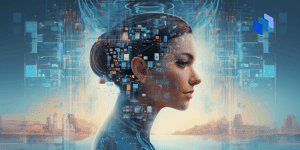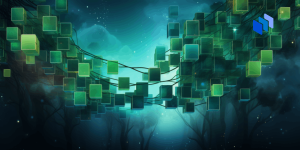What Does ChatGPT Mean?
ChatGPT (Chat Generative Pre-trained Transformer) is a complex machine learning model that is able to carry out natural language generation (NLG) tasks with such a high level of accuracy that the model can pass a Turing Test.
ChatGPT was trained on massive amounts of unlabeled data scraped from the internet before 2022. The model is continually being monitored and fine-tuned for specific language-oriented tasks with additional datasets labeled by humans.
Tasks ChatGPT excels at include:
- Providing answers to questions;
- Completing a given text or a phrase;
- Writing fiction and non-fiction content from prompts;
- Producing humanlike chatbot responses;
- Generating computer code;
- Translating the text from one language to another;
- Performing calculations;
- Summarizing a given text;
- Classifying text into different categories;
- Analyzing text sentiment;
- Generating text that summarizes data in tables and spreadsheets;
- Responding to user input in a conversational manner.
ChatGPT is built on a large language model (LLM) called GPT-3 (Generative Pre-trained Transformer 3). An LLM is a type of deep neural network that uses billions of parameters and is trained with petabytes of data.
The model was developed by OpenAI, a research firm founded by Elon Musk.
Techopedia Explains ChatGPT
Technically, ChatGPT can be categorized as a type of generative AI. Once trained, a generative AI model can produce outputs that are similar – but not the same – as the training data.
How was ChatGPT trained?
Data scientists and machine learning engineers used semi-supervised learning to train ChatGPT.
Semi-supervised learning algorithms are trained on datasets that are partially labeled; some of the data points have a label, and some do not. The model uses the labeled data to predict the output of the unlabeled data.
According to OpenAI, data scientists gathered the huge amount of unlabeled data required to train the LLM by scraping the internet. They supplemented this with text sources that were either in the public domain or made available for use by researchers and possibly governments.
OpenAI has not revealed exactly how they were able to label the immensely large data sets required to fine-tune the model, but it’s known they outsourced some of the labeling, and it’s likely they also took advantage of crowdsourcing platforms like Amazon’s Mechanical Turk.
ChatGPT uses prompts to generate more accurate and relevant responses to a wide range of inputs and is continually being fine-tuned with user prompts that are relevant to a specific task at hand.
The process involves giving the model a prompt and then allowing it to generate a response. The generated output is then evaluated by a human evaluator, and the model is adjusted based on the feedback. The fine-tuning process is repeated until the model’s output is acceptable.
This is why it’s important for users who are interacting with ChatGPT to provide feedback on the quality of the model’s output. By evaluating the model’s output and providing feedback, users can help fine-tune the model and contribute to its ongoing development and improvement.
ChatGPT and Responsible AI
Responsible AI is a governance framework that’s intended to help make complex black-box AI models like ChatGPT more explainable and therefore more trustworthy. There are several steps OpenAI is taking to help make sure ChatGPT supports the concept of responsible AI.
- Researchers and developers at OpenAI are looking for ways to make this deep learning model more transparent and are trying to be as forthright as possible about the model’s capabilities, limitations, and potential misuse.
- OpenAI data scientists are continually reviewing user feedback and have put humans in the loop (HITL) to eliminate bias in their training data.
- OpenAI engineers are continuously monitoring ChatGPT user prompts and outputs of the model to help ensure it is being used in a responsible manner.
ChatGPT and Education
The latest version of ChatGPT produces text that is so humanlike that educators have rung an alarm about how the model is being misused by students. In response, some schools have outright banned ChatGPT. Others are testing out plagiarism tools designed to statistically identify the models’ linguistic watermarks.
OpenAi, for example, is currently offering members a free plagiarism tool called AI classifier. According to the OpenAI website, however, the tool works best when the content that’s being evaluated for originality has at least 250 words and is written by an adult who speaks English.
Advocates of ChatGPT in the classroom see value in the anti-plagiarism tools but also maintain this type of artificial intelligence (AI) is not going to go away. Instead of banning its use, students should be taught how to use the tool ethically, and educators should use this type of AI to teach critical thinking.
Business Uses for ChatGPT
ChatGPT is being used as an augmented intelligence tool for a wide variety of business tasks. It is currently being used to:
- Automate the content creation process for social media posts, website articles, and product descriptions;
- Build customer-facing conversational chatbots that are capable of going off script;
- Summarize and categorize customer feedback from multiple channels;
- Translate business reports and marketing deliverables from one language to another;
- Write boilerplate computer code and generic scripts;
- Translate the information contained in a table or spreadsheet into text;
- Create chatbots that support just-in-time learning for internal training programs;
- Write meta descriptions and suggest synonyms for SEO keywords.
ChatGPT Competitors
Google Bard – a conversational AI service that delivers accurate and up-to-date answers to questions by aggregating information from the internet. Although it’s not known exactly how Google’s chatbot service will be different from ChatGPT, industry pundits speculate that BARD’s differentiator will be that it can access current information from the internet, while ChatGPT only has access to the information published before 2022.
Facebook Blender – a large language model developed by Facebook AI. Blender is capable of performing a variety of language tasks, including answering questions, generating text, and summarizing long documents.





